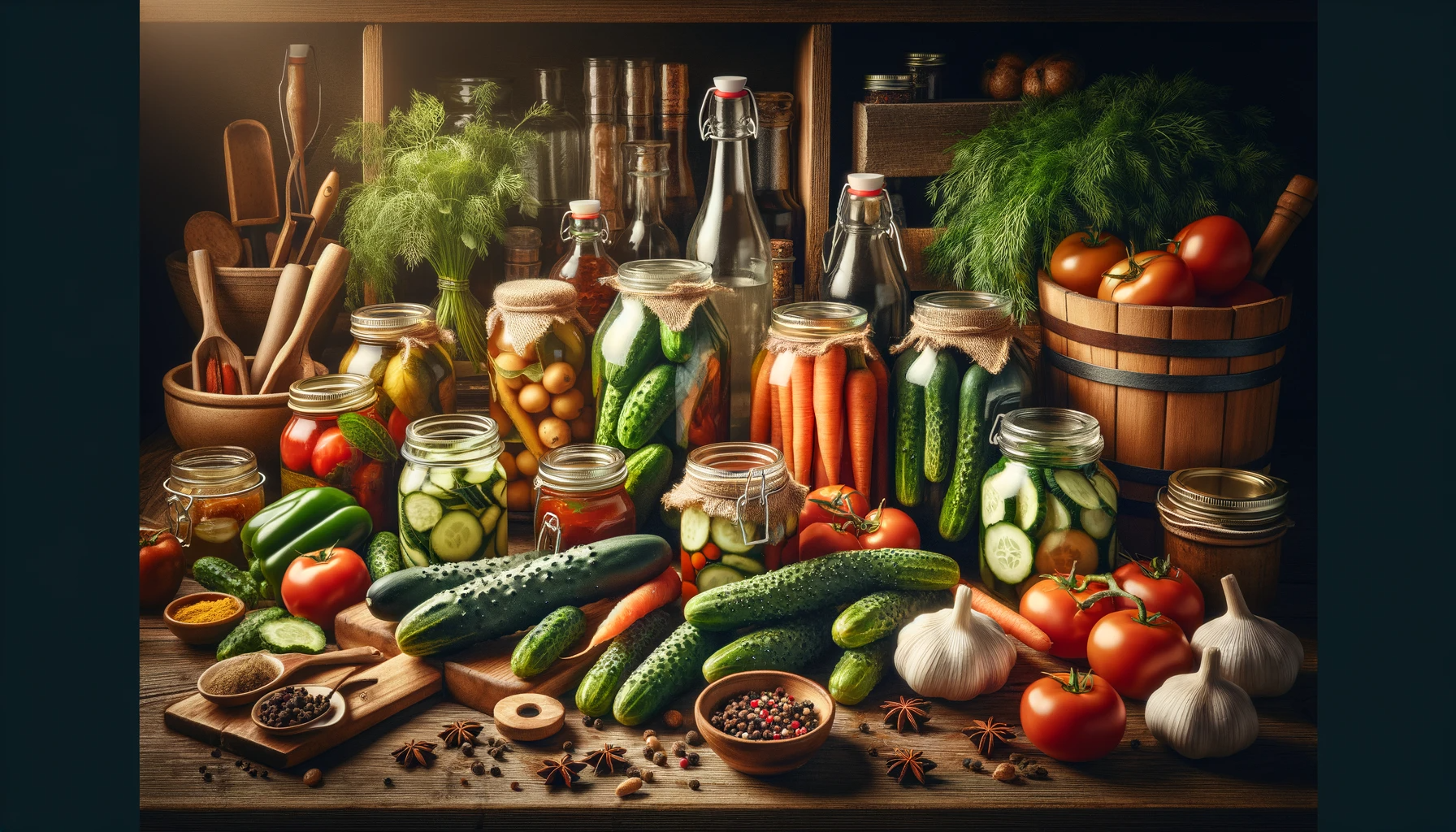Introduction:
When the harvest season arrives and your garden or local farmers’ market is overflowing with fresh produce, it’s the perfect time to explore the art of canning and pickling. Preserving your bounty not only ensures that you can enjoy the flavors of summer all year round but also reduces food waste. In this beginner’s guide, we’ll walk you through the essential ingredients and steps to get started with canning and pickling, all while keeping your content SEO-optimized.
- Fresh Produce Selection: The key to successful canning and pickling lies in choosing the best-quality ingredients. Opt for fresh, ripe, and unblemished fruits and vegetables. Whether you’re canning peaches, cucumbers, or tomatoes, select the best of the bunch.
- Vinegar Varieties: Vinegar is a critical component of pickling. Highlight the importance of choosing the right type, such as white vinegar, apple cider vinegar, or even rice vinegar, depending on your recipe. Each imparts its unique flavor, so choose wisely.
- Salt and Sugar: Salt and sugar are essential for both canning and pickling. Mention the different types of salts (kosher, pickling salt) and sugars (granulated, brown sugar) and their roles in preserving and flavoring your ingredients.
- Spices and Herbs: Explain how spices and herbs enhance the flavor of your preserved goods. Highlight some common choices like garlic, dill, mustard seeds, or cinnamon sticks, and how they can be combined to create unique flavor profiles.
- Jars and Lids: Proper containers are crucial. Describe the various types of canning jars available, including mason jars, and how to choose the right one. Emphasize the importance of using new lids for a proper seal.
- Boiling Water Bath and Canning Equipment: For canning, discuss the need for a boiling water bath canner or pressure canner, as well as tools like jar lifters, canning funnels, and bubble removers. Explain their roles in the process.
- Cleanliness and Sanitization: Stress the importance of keeping everything clean and sanitized to prevent contamination. Highlight the steps involved in sterilizing your jars, lids, and equipment.
- Recipes and Step-by-Step Instructions: Offer a basic recipe for beginners, such as simple pickled cucumbers or canned tomatoes. Provide step-by-step instructions, detailing each stage of the process, from preparation to sealing.
- Storage and Labeling: Explain the correct way to store your canned and pickled goods, emphasizing the importance of a cool, dark, and dry location. Encourage readers to label jars with contents and date for easy identification.
- Safety Considerations: Remind readers of safety measures, such as avoiding overfilling jars and leaving proper headspace. Mention that any jars with damaged seals should not be consumed.
Conclusion:
Preserving the harvest through canning and pickling can be a rewarding and sustainable endeavor. With the right ingredients and equipment, anyone can enjoy the flavors of summer all year round while reducing food waste. As you embark on your journey, remember that practice makes perfect, and soon you’ll be creating delicious, homemade preserved treats that will delight your taste buds and impress your friends and family. Happy preserving!
